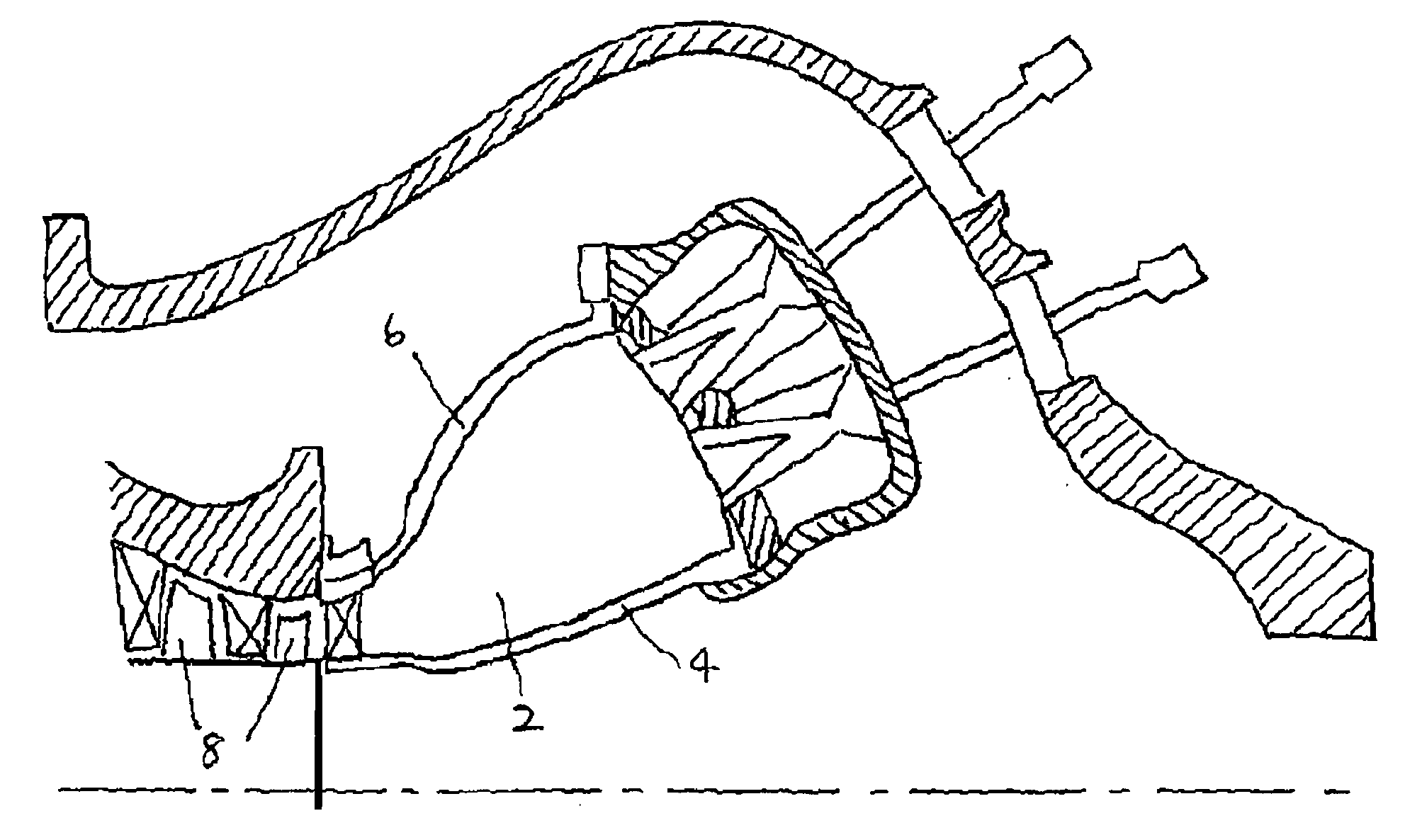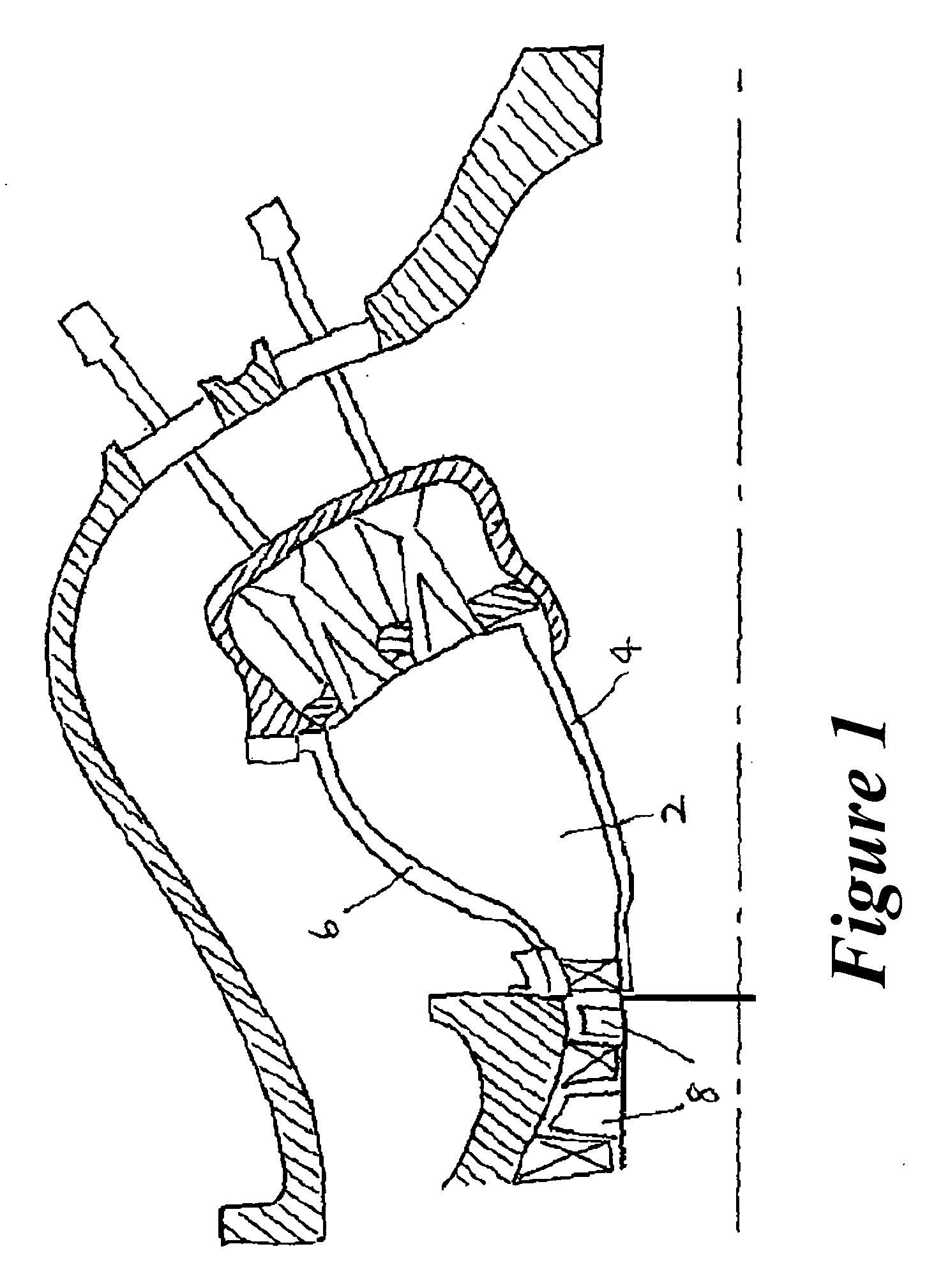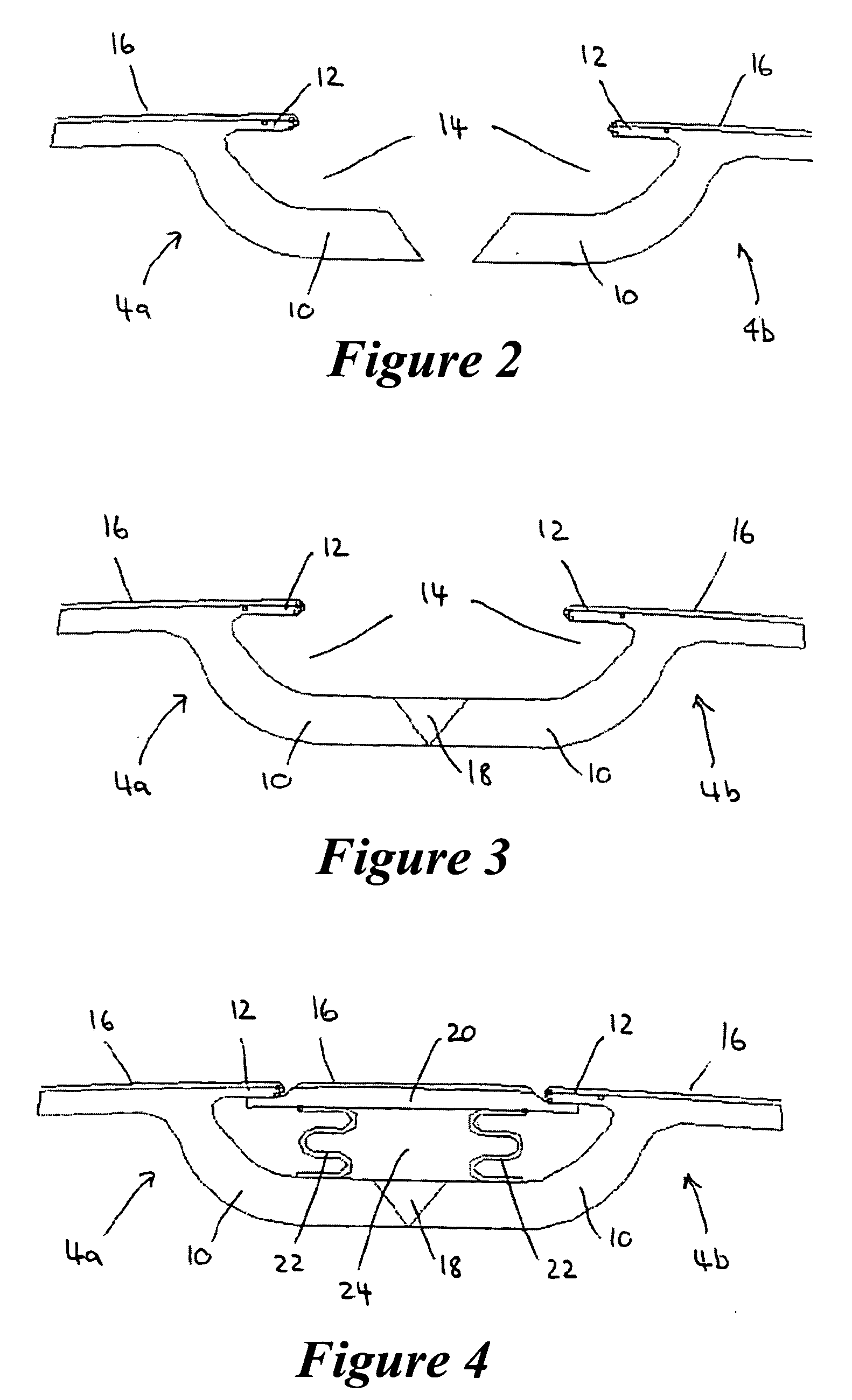Combustor liners
a technology of combustor liner and combustor plate, which is applied in the field of combustor plate, can solve the problems that the combustor plate cannot be applied over a weld, and the operation life of the welded joint between the combustor plate sections is extremely limited
- Summary
- Abstract
- Description
- Claims
- Application Information
AI Technical Summary
Benefits of technology
Problems solved by technology
Method used
Image
Examples
Embodiment Construction
[0028]FIG. 1 shows part of a gas turbine engine in which an annular combustion chamber 2 is formed by a radially inner combustor liner 4 and a radially outer combustor liner 6. A mixture of compressed air and fuel is supplied to the combustion chamber 2 where it is ignited and the resulting gases are used drive a series of moving blades 8. Although the invention is described below with reference to the inner combustor liner 4, it will be readily appreciated that the outer combustor liner 6 can be formed in the same way.
[0029] The inner combustor liner 4 is formed from two or more individual liner sections made of the commercially available alloy Inconel 617. To construct the inner combustor liner 4, the liner sections are joined together along their axially extending edges. The way in which two adjacent liner sections 4a and 4b are joined together will now be explained with reference to FIGS. 2 to 4. Each liner section 4a and 4b has a pair of axially extending edges (only one of wh...
PUM
 Login to View More
Login to View More Abstract
Description
Claims
Application Information
 Login to View More
Login to View More - R&D
- Intellectual Property
- Life Sciences
- Materials
- Tech Scout
- Unparalleled Data Quality
- Higher Quality Content
- 60% Fewer Hallucinations
Browse by: Latest US Patents, China's latest patents, Technical Efficacy Thesaurus, Application Domain, Technology Topic, Popular Technical Reports.
© 2025 PatSnap. All rights reserved.Legal|Privacy policy|Modern Slavery Act Transparency Statement|Sitemap|About US| Contact US: help@patsnap.com



